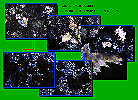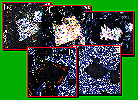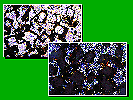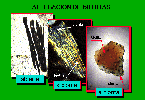
The minerals of the coarse sand fraction are found
altered to a varying degree depending on their stability and the
soil's characteristics.
In the sands in the soils studied, the following transformations
have been found.
Micas. Biotite
meteorizes, opening up and separating into in a series of flakes.
It very often transforms into chlorite. Muscovite is much more
resistant, although it also fragments into flakes.

On one occasion, we observed how it releases iron that precipitates on the surface of these muscovite flakes forming a haematite type Fe compound. As the release of iron continues, a cover of haematite reforms deposited on the muscovite flake.
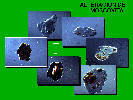
Chlorite also alters releases Fe compounds.

Feldspars, above all plagioclases, are transformed into sericite to a varying degree. On one occasion, its alteration was to gibbsite.
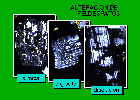
Garnet can alter intensely in some soils. It often releases Fe


In fairly acidic soils we have observed how a haematite type iron compound is forming that is progressively invading the grain,
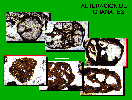
on the contrary, in extremely acidic soils and with reducing conditions, garnet decomposes, dissolving without iron compounds forming on the surface.
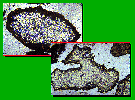
Gypsum has been observed once transforming into basanite
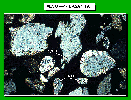
Carbonates dissolve easily. Sometimes we have found some grains formed by dolomite crystals included in a calcite cement that has suffered some interesting transformations.
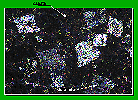
At first the calcite in the groundmass was substituted by chalcedony, leaving the dolomite crystals (which have rhombohedral shapes) surrounded by silica. The dolomite has then begun dissolving, leaving rhombohedral voids in which the ferric compounds have been entering and depositing on the walls.
